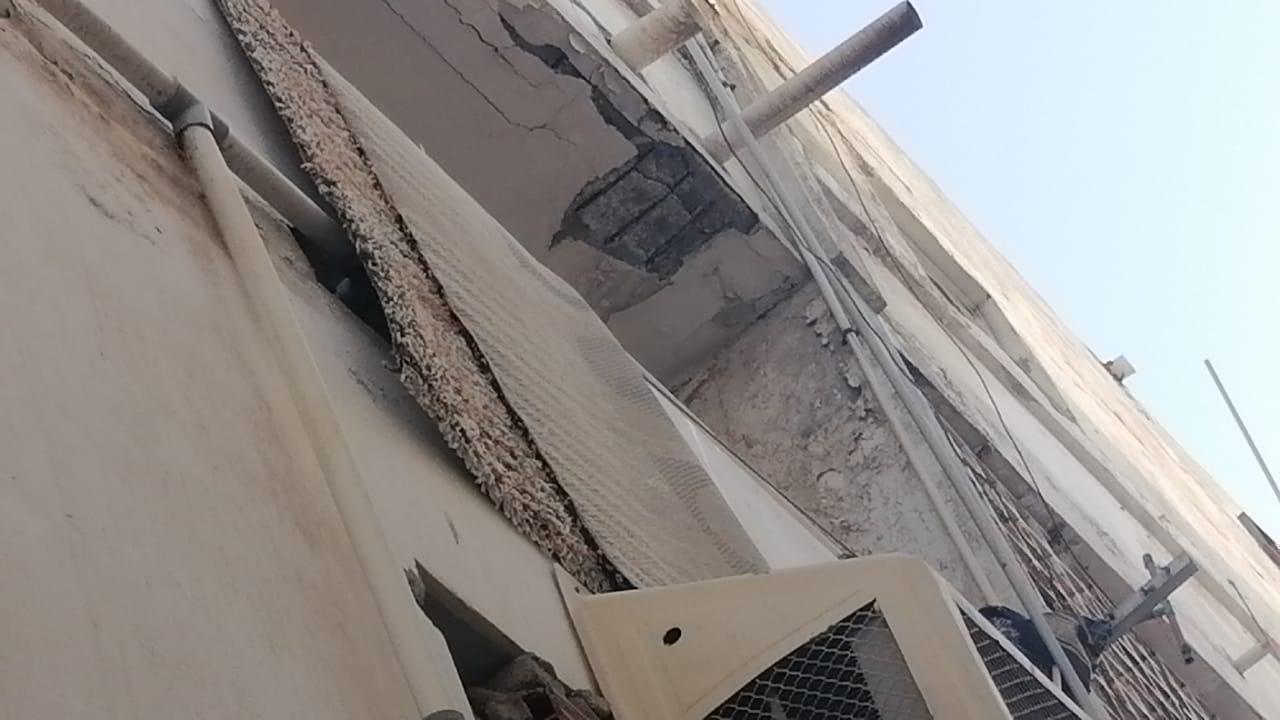In general, building collapses are frequent, as there are a number of factors that affect the structural integrity of the building.
Through these factors, the signs of partial or total collapse of buildings can be assessed, such as the age, design and condition of the building.
Also structural materials, construction methods, unregulated construction or modification,
and extreme weather conditions, such as floods, heavy snow, or high winds.
Every homeowner or renter must know the signs that indicate its imminent collapse,
which include cracks in the walls, deviating floors from the walls, slanting walls,
shifting columns from their original places, or bulging walls.
Sounds coming from the building structure
It also indicates unusual sounds coming from the structure of the building, an indication of the imminent collapse of the building.
Or, door and window frames that are bent or tilted to one end may also indicate a building collapse.
The granite or marble installed on the window also cracked, and a gap formed between the door and the door frame,
making it difficult to close the door, or to start the flow of water to the foundation of the building.
Warning signs indicating that buildings are about to collapse
While some types of buildings under construction or demolition, when exposed to fire, may collapse suddenly without warning.
It is important to understand the type of construction involved and the manner and sequence of construction work being carried out,
and this information should assist in assessing the potential for partial or structural collapse.
For example, construction work may be subject to cracking and swelling, which may result in overloading of the sections.
While older buildings may not have mechanical contact between floors, beams and walls, any separation leads to collapse.
Any localized collapse or demolition can leave thin sections of the structure exposed to wind or other loads.
Or it may lead to a redistribution of the weight of the upper parts, which in turn may lead to increased overload and gradual collapse.

The spread of fires through undiscovered spaces
When the fire spreads through undetected spaces, this can have a direct impact on the stability of the building and is difficult to predict.
Buildings may have varying degrees of structural stability even if they are not affected by fire, for example:
- When buildings are incomplete
- During structural adjustments
- During demolition
- When there is neglect and poor maintenance
Strategic actions
Operating personnel should be provided with hazard information about existing construction or demolition sites if available
Tactical actions
The type of building or structure and method of construction must be determined, as well as an assessment of the potential for collapse.
Also be mindful of the structural integrity of the building and the effect of heat and weight from firefighting media.
So look for signs of a breakdown, which include:
- Cracks in the walls
- Overhanging floors or floors deviating from the wall
- Displaced columns
- Drop brackets
- Bulging walls
- Torsion of columns or beams
- Determining the type and extent of the structural work being implemented.
- Determine temporary forms of support
- Look for signs of compromised or lost structural support
- Look for signs of temporary trusses or supports
- Find hash marks or fire stops that have been destroyed or removed
- Determine the location, extent and impact of the fire

Thus, a structural engineer can be hired to look at the areas of concern, which are as follows:
- Cracking, especially wide open cracks in structural elements.
- Concrete cracking and spalling.
- Possible signs of wear iron corrosion, which are those that require further evaluation by professionals.
Here are the main factors that indicate the imminent collapse of any building:
Wall cracks
Among the natural signs that indicate that the structure is unable to absorb the load or movement it is exposed to,
is the irregular cracks in the walls, and the increasing distance between these cracks over time.
When this sign is noticed, it means that the building is about to collapse.
Move essential parts
Due to poor foundation or problems with the foundation, certain parts of the house can move from their original position,
such as the tilt of columns, so this is one of the most serious signs of impending building collapse.
Hear voices from construction
When the house begins to make crackling sounds, especially during strong winds, it may be due to nails, pipes,
grinding and air dust rubbing against the wooden part of the structure.
What causes a cracking sound, you must pay attention to these signs and ensure the safety of the building directly.
Deterioration of the support structure
Deterioration in the structure of a building or home can be caused by many factors,
such as the use of substandard materials in the required construction.
This causes failure and direct impact on the external walls, which in turn leads to the eventual collapse of buildings.
Rips and cracks in foundation structures that may occur during construction also lead to failure of adjacent structural elements, and the building to collapse.
Moisture penetration
Penetration of moisture or water causes structural dampness. Certain parts of the building should not be wet such as the roof, inside walls and floors.
These areas are structurally reinforced to resist moisture, so when moisture penetrates these barriers, it is a sign of building collapse.
You may like: The effect of architectural design on reducing the risks of real estate investment
The Role of the Architect in Maintaining a Healthy Lifestyle Through the Right Architectural Design

